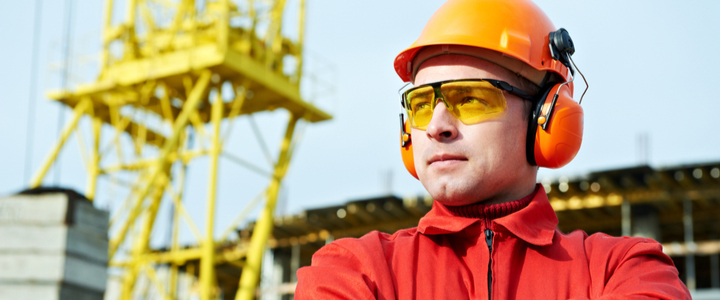Workplace safety includes employees protecting their eyes and face, but do you know what an eye and face hazard is? There may be more hazards in the workplace than you realize, and OSHA has strict standards when it comes to protecting employees’ health and safety.
Why Is Eye Protection Important?
Eye injuries are common in the workplace, and many are preventable, according to The National Institute for Occupational Safety and Health (NIOSH). The institute reports an estimated 2,000 eye injuries requiring medical attention occur at U.S. companies each year. They also state that up to 90% of these injuries are preventable with protective eyewear.
Eye and face safety protection are paramount at work, and here are the reasons why along with tips to help businesses implement standard PPE requirements.
Potential Eye Hazards in the Workplace
Eye and face protection may be more important than you realize. Occupational jobs come with different types of hazards employees may not be aware of.
Employees should always follow the OSHA eye protection standards when they are working in these conditions.
- Projectiles aren’t always visible. Dust from concrete, metal, and wood can easily get into employees’ eyes. Larger particles can cause even more severe damage, including to the face.
- Chemicals always pose a hazard to the eyes and face. Fumes can result in permanent eye damage, and burns from chemicals can leave scarring on the face. Chemical splashes can also leave employees with vision problems and blindness.
- Radiation is another eye and face hazard. Laser, infrared, heat, and ultraviolet light can all damage the eyes.
- Bloodborne pathogens are a concern with areas with exposed mucus membranes, like the eyes, nose, and mouth. Blood and other bodily fluids can easily enter these areas upon contact, passing on diseases like Hepatitis and HIV.
An often overlooked eye hazard is digital eye strain, also known as computer vision syndrome. It refers to several types of eye problems that can occur from extended exposure to the glare from a cell phone, tablet, computer, and other electronic devices.
OSHA Recommendations Regarding Eye and Face Protection
OSHA rules on PPE include eye and face protection, along with welding shields. The agency has several recommendations that also correspond with ANSI eye and face protection standards.
- Employees should have eyewear that fits properly and designed for the specific hazard. Maintenance is also key. The protective eyewear should always be clean, without any scratches, cracks, or breaks.
- All employees should know how to use their personal protective equipment in an emergency. They should also be supplied and familiar with eye protection training material.
- Eyeglass and contact wearers should have safety equipment that fits comfortably over their glasses. Contact lens wears should also have protective glasses that shield their eyes from any potential contaminants.
- Prescription glasses are not considered safety gear under OSHA and other agencies’ safety standards.
- Eyewear should always be disinfected before storing in an approved protective case.
- Face shields are not enough to protect employees’ eyes and faces. They should be used with protective eyewear. You also only want to use OSHA-compliant face shields.
How to Practice Proper Eye and Face safety in the Workplace
Following OSHA rules on PPE is the best way to prevent eye and face injuries. Doing four things can minimize any workplace hazards and keep employees’ eyes and face safe from injury.
1. Know What the Hazards Are at Work
Pay attention to the equipment and materials used in your industry. Is there a risk for dust, shards, or other particles? You also want to consider chemicals—fumes and liquids pose a threat to everyone in the workplace.
2. Eliminate Potential Threats
Eliminating hazards is the best way to prevent eye injuries, and it’s a cost-effective preventative measure. Machine guards can stop small metal shards and other particles from reaching employees. Work screens are another option, as long as the holes are small enough to block particles from getting through.
3. Follow OSHA Eye Protect Standards
Regular glasses and contact lenses are not OSHA-compliant protective eyewear. Eye protection by OSHA safety training standards requires all eyewear to meet the requirements of the American National Standards Institute. You’ll know if the glasses are approved if you see a Z87 stamp on the frame or lens.
4. Replace Any Damaged PPE Equipment
Damaged eyeglasses and face shields will not provide adequate protection. The same is also true if the PPE is dirty. Keeping your protective gear clean is crucial, along with replacing any damaged equipment.
Contact Safety by Design for Eye and Face Protection Training
OSHA rules on PPE can be confusing. Ignoring them puts employees at risk, along with the company’s bottom line. Workplace injuries are expensive, especially when you factor in OSHA fines and penalties.
Protect your employees and meet OSHA face shield requirements, along with other PPE standards, by contacting Safety by Design. We are here to help businesses implement safety plans that prevent workplace injuries.





